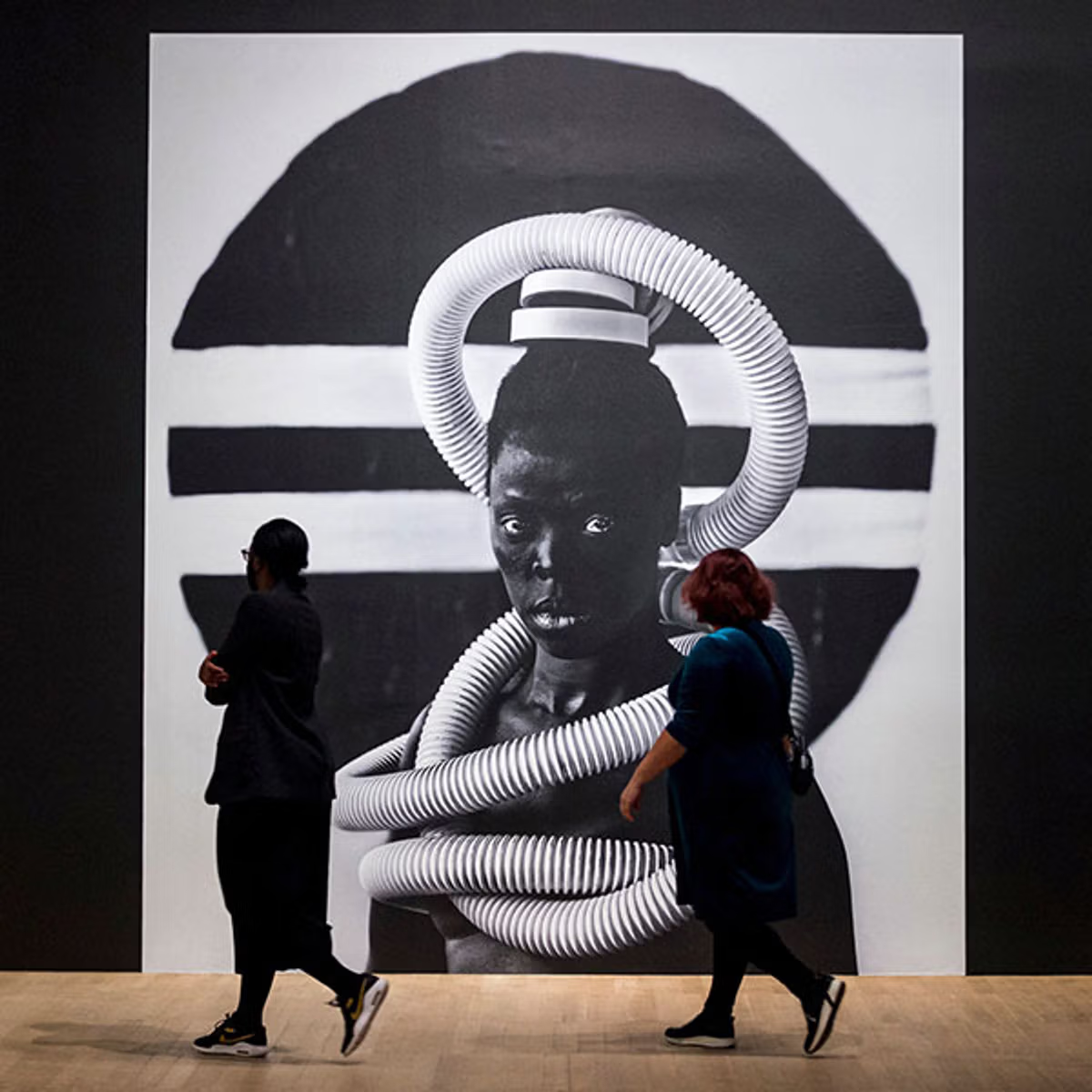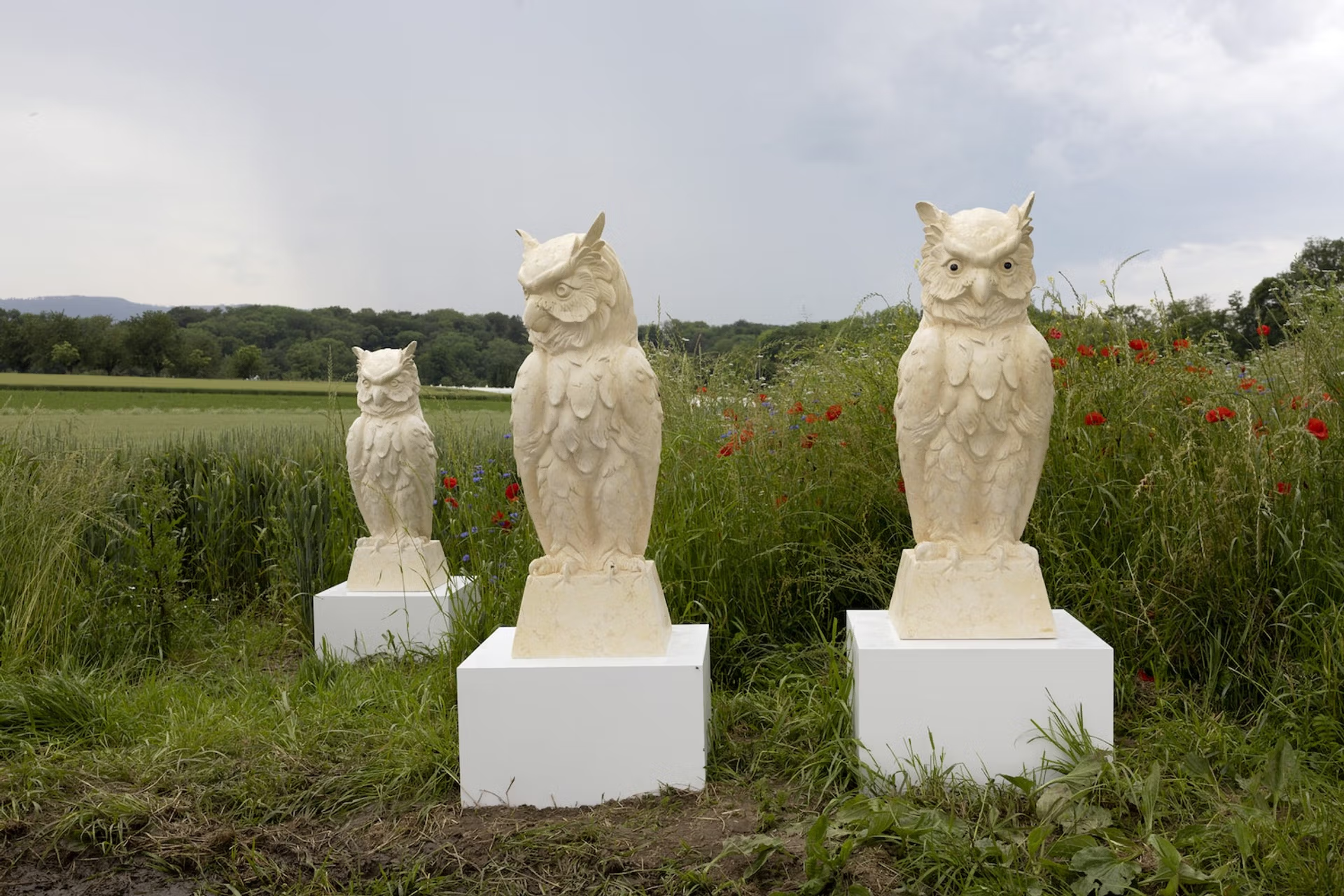
Slow art: Tate Modern’s 2024 Zanele Muholi show ran for nearly seven months
Photo: Stephen Chung/LNP/Shutterstock
The Great Slowdown
Fewer exhibitions, reduced artistic production, and more demanding collectors signal a shift in the art world.
This insightful article, published by Anny Shaw in The Art Newspaper on March 10, 2025, explores how the art world is shifting toward a slower, more reflective pace. Shaw notes that museums are staging fewer large‑scale exhibitions, prioritizing quality and depth over sheer quantity. Artists are scaling back their output, and collectors are becoming increasingly selective—prompting galleries, museums, and fairs to foster a more deliberate and meaningful connection with their audiences rather than relying on rapid turnover. In short, here is a summary that, in my view, captures its most significant points.
A More Reflective Era for the Art World?
After a challenging year in which international galleries, auction houses, and museums were forced to scale back their operations, a slower and more deliberate approach is beginning to take root in the art business. This shift is marked by longer, more in‑depth exhibitions and bespoke events that prioritize genuine connection over spectacle.
Artists, too, are pushing back against exhausting production schedules, while gallerists and collectors are becoming increasingly selective about which art fairs they attend each year.
This transformation has been a long time in the making. The Art Newspaper reported on this trend last summer in relation to U.S. museums, but now it is resonating worldwide, across every sector of the art industry.
“The times demand that we do things differently, that we work in new ways,” says Leonie Bell, director of the V&A Dundee.

Leonie Bell, the director of V&A Dundee, has reduced the number of major shows the museum stages to one a year.“I wouldn’t use the term cost-cutting”, she says
Photo: Julie Howden
Changing Exhibition Models
The V&A Dundee, which opened in 2018, initially operated on the expectation of hosting two or three major exhibitions a year. In 2024, however, Bell reduced that number to a single large‑scale exhibition lasting nine months.
A report submitted last year by the museum to the Scottish government cited “a volatile operating environment” as the reason for reducing the number of exhibitions in order to safeguard future programming and protect staff. Bell, however, views this transition as a positive one:
“I wouldn’t use the term cost‑cutting,” she explains. “We’ve redesigned our model to respond deeply to the context in which we now work.”
To complement the main gallery, Bell created a second space for shorter shows. The program has become more dynamic and has significantly increased the amount of free content. Moreover, the new production schedule has a far smaller environmental footprint.
Operating in a small city like Dundee, with a population of about 150,000, the museum must strike a balance between attracting local visitors and those who will come only once.
“It’s about rhythm and how the seasons unfold,” Bell says. “Television is excellent, cinema is experiencing a renaissance. What we do must be so good that people are willing to leave their sofas and put down their phones to experience it.”
Museums Prioritizing the Visitor Experience
Eric Crosby, director of the Carnegie Museum of Art in Pittsburgh, was likewise motivated by interaction with audiences and staff when reducing the number of exhibitions. Before 2020, the museum mounted ten shows a year.
“It was too much. It felt like a burden on the staff and also like something the public couldn’t fully absorb,” Crosby explains.
While financial constraints played a part, Crosby believes the issue runs deeper:
“What is the purpose of a museum? Art is a slow, intentional experience. It unfolds on different emotional levels, sometimes all at once. That takes time. So why create a rushed experience?”
As part of this new approach, the Carnegie Museum is rethinking how it presents its 100,000‑piece collection. Previously organized chronologically, galleries will now close and reopen periodically with new installations over the next two years.
Even the prestigious Carnegie International—a biennial dating back to 1896 and now held every three or four years—is under review.
“Biennials create a sense of urgency,” Crosby says. “I’m curious to see what happens if we reset those expectations and focus on supporting artists in a more thoughtful way.”
Collectors and a Shifting Market
The commercial sector is also adopting a “less is more” approach in response to a depressed market and shifting collector habits. Auction houses have been particularly affected by a scarcity of iconic works. To adapt, many have moved to online sales, allowing collectors to participate from home.
Art fairs have undergone a similar transformation. In 2019, the number of global fairs peaked at 408, plummeting in 2020 due to the pandemic. Although the number has rebounded to 377, collectors are far more selective. An Art Basel report revealed that fair attendance has dropped 40%, from 89 events a year before the pandemic to just 51 in 2024.
“We need to return to the local,” says Esther Kim Varet, founder of Various Small Fires. “We have to focus on spaces that already exist and can host significant exhibitions for weeks, not just fleeting four‑ or five‑day pop‑ups.”
A New Model for the Art World
Even major galleries are shifting their approach. Hauser & Wirth, for instance, has reduced its opening hours and the number of exhibitions at its Somerset location.
Jeremy Epstein, director of Edel Assanti in London, has cut his annual exhibitions from six to four.
“The idea that all galleries must follow the same model is already obsolete,” Epstein says. “Collectors are now looking for unique experiences.”
The market is changing—and with it, the way artworks are presented and experienced. As Epstein concludes:
“We’ve finally entered an era in which different models can coexist. There is no longer a single, hierarchical system that fits all.”

Julia Scher's owl sculptures at Basel Social Club
Photo: © Gina Folly









Comments powered by Talkyard.